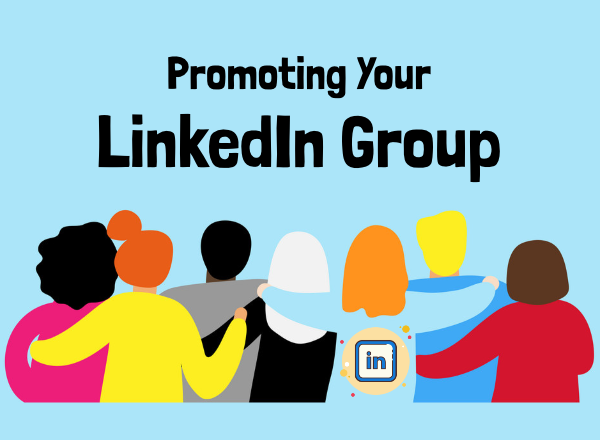
We’ve gotten a little ahead of ourselves here, because there can be no engagement or moderation without any group members. In fact, after you put the finishing touches on your group and triumphantly make it public, it can be a bit disappointing to see that it only has one member… you. Regardless of whether you’re starting a group from scratch or you’ve had one up and running for awhile, you need to promote what it has to offer in order to ensure its growth and success.
Promotion for any group usually starts with your own company’s network of connections. If you want to send out invitations to encourage people to join your group, LinkedIn distributes emails on your behalf by selecting the “invite others” option under “share group,” which appears next to your group rules on the top right-hand corner of your group’s page. By pressing the “in” logo that appears at the far right of where you enter your connections, you can easily navigate through your own connections by industry and location and send out 50 invitations at a time. Sending out invitations using the official LinkedIn functionality is efficient in that it allows recipients of the invitation to easily join your group from the message. Just as with any other communication tools on LinkedIn, make sure you personalize your message so it provides an incentive for potential members.
It also goes without saying that you should only send group invitations to those you think might be interested in joining. Many LinkedIn users are annoyed when they receive invitations for groups that are totally irrelevant to them, and it’s because of the prevalence of blanket invitations that many people view some groups as spam.
In your group introduction, include details regarding the group and your brand messages that will resonate with your targeted demographic. It is important to differentiate yourself from the hundreds of thousands of LinkedIn Groups that already exist. Potential members should find value in joining your group, so provide a good reason for those reading the invitation to become members. In essence, if you think about your target audience, integrate branding and differentiation in your message, and outline the benefits of joining your LinkedIn Group, you stand a much higher chance of success when emailing prospective members.
You will be at an advantage for promotion if many of your employees are already established users with LinkedIn connections. Of course, just as you would target your message, your employees should also only introduce your group to those who are in your target demographic and would find it a valuable resource.
If you choose to create a group that focuses on a particular demographic or industry, try to connect with the power connectors in that demographic; they can be found by doing a targeted advanced people search, which displays results sorted by number of connections. Let them know about your group, and, if they join, others that look at their profiles may find your group and join as well.
You might also find value in visiting the discussion boards in similar groups in which you are a member and posting a message introducing the new group. It is obviously in your best interest to look at the group rules and contact the group manager first to see if he or she is comfortable with your doing so. As long as you differentiate your group as being complementary to the group on which you would like to post, and you agree to post your message once and then move on, you just might be approved to do so. Offering them a chance of jointly promoting their group to your community is recommended for this type of approach.
Promotion doesn’t and shouldn’t stop with LinkedIn members: Once you begin to strategically engage in social media, you need to optimize your own website to embrace that strategy. For a LinkedIn Group, this outreach can be as simple as posting a logo with a clickable link in a prominent location on your website that leads to your group. This allows visitors to your website to learn about your community and easily join it. If you publish an email newsletter, make sure you feature your LinkedIn Group logo there as well. An occasional tweet or Facebook post introducing your LinkedIn Group is another way to efficiently utilize social media to advertise and promote your LinkedIn Group.
Finally, LinkedIn provides two different ways to easily share your open group on Twitter, Facebook, and LinkedIn that you should utilize. The first is to use the “share group” functionality that you may have used to invite other LinkedIn members to join. Above that selection, LinkedIn conveniently provides a shortcut to share the group on your LinkedIn Status Update as well as on Twitter and Facebook. Not only should you do this after creating your group, but also consider doing this at regular monthly, bimonthly, or quarterly intervals to remind your ever growing network of the group’s presence.
You can also utilize the “share this discussion” feature to promote your group via social media. This is found at the top left-hand side of every discussion in an open group. By enticing your LinkedIn connections, Facebook friends, and Twitter followers with a popular discussion or content from your group, you can lead them to your group where the value is laid out for them and joining is a simple click away.